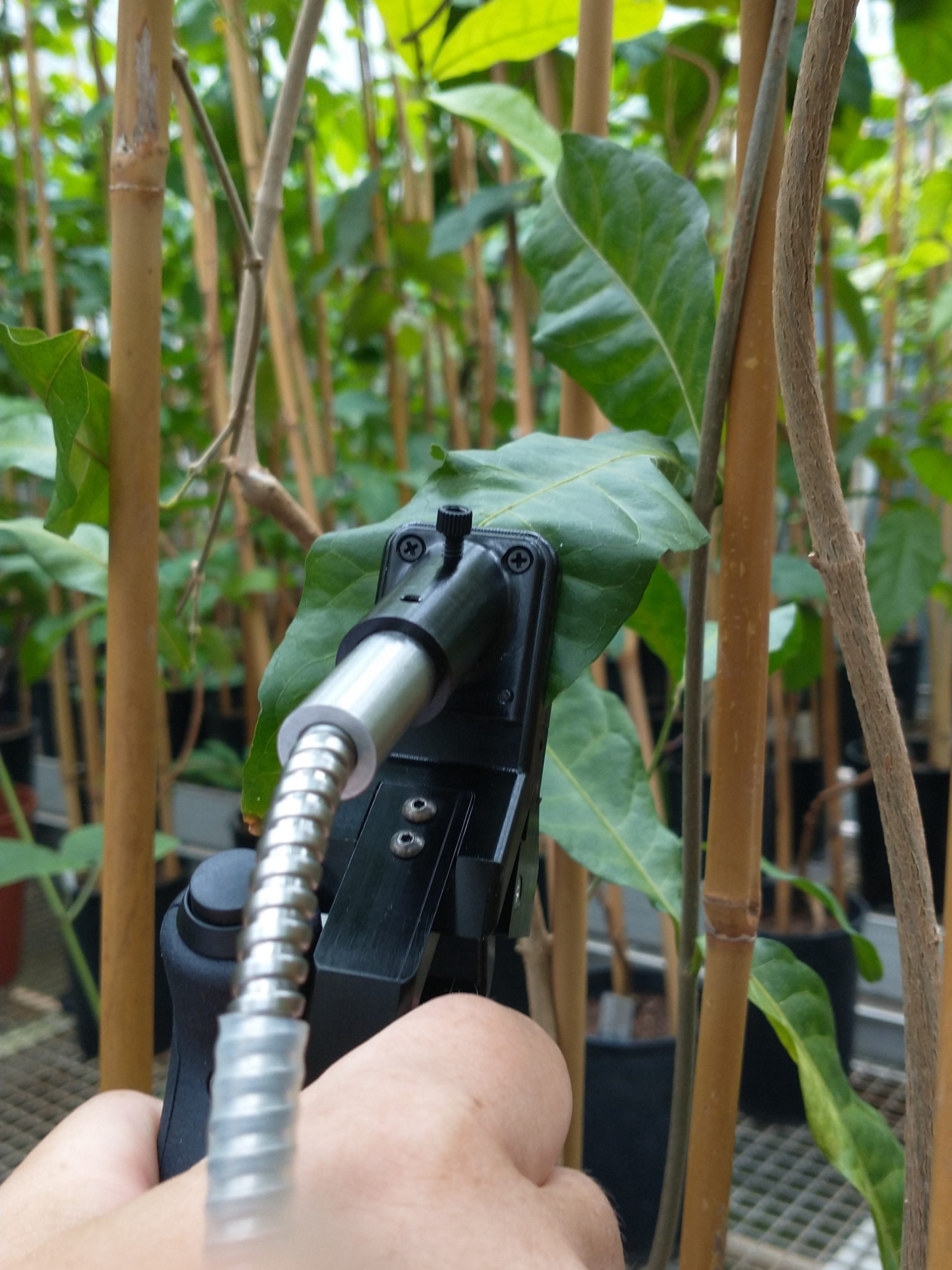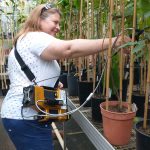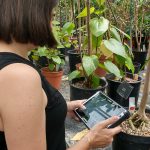
November 25, 2021, by lzzeb
Being “out out” but still “in in” at Kew Gardens: measuring the invisible of lianas and trees
A blog by Geertje van der Heijden
In July 2021, Doreen Boyd and I went to the tropical greenhouses in Royal Botanical Gardens Kew to collaborate with Dr. Justin Moat to start an ambitious project to collate the first substantial tropical liana (woody vines) and tree spectral library. Equipped with a fancy Spectral Evolution spectrometer (borrowed from NERC ARSF), we spend 3 days in the greenhouses measuring the spectral reflectance (350-2500 nm) of over a 100 different tree and liana species from across the world, which are curated at Kew.
This work is important because although remote sensing now affords the study of tropical forests on local, regional and global scales, the vast majority of remote sensing research has focused exclusively on trees. However, lianas are a predominantly tropical plant group that affect many ecosystem processes in tropical forests, including carbon storage and sequestration. Lianas are particularly wide-spread in tropical canopies, which affords for them to be studied using air- and/or space-borne remote sensors. Effectively studying lianas using remote sensing would assist in substantially increasing our knowledge on the distribution, structure and function of lianas and their impact on tropical forests. However, remote sensing of lianas is still in its infancy, which means that our spectral knowledge across liana species is very incomplete. Existing spectral libraries do not contain any liana spectra and are scarce in spectra for tropical trees. With this work, we made an important start in developing a large spectral library containing liana and tree species from different parts of the world. This library will enable us to robustly test whether lianas and trees are spectrally different, which would help underpin and advance remote sensing of lianas.
I am very grateful to the School of Geography for the opportunity to carry out this piece of research. Though it may take a little while longer before research in the tropics is feasible again, after 15 months of working from the garden office, it was lovely to feel a little like I was back in the tropics again – we even got the daily rain showers to make the experience complete!

Prof. Doreen Boyd operating the Spectral Evolution spectrometer with leaf clip to measure leaf spectral reflectance.
No comments yet, fill out a comment to be the first


Leave a Reply